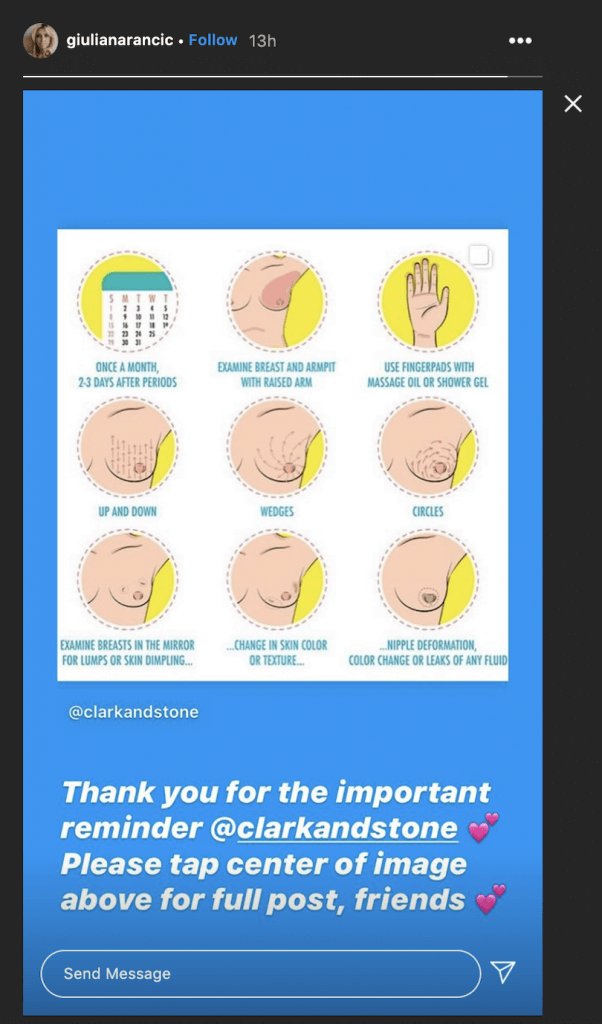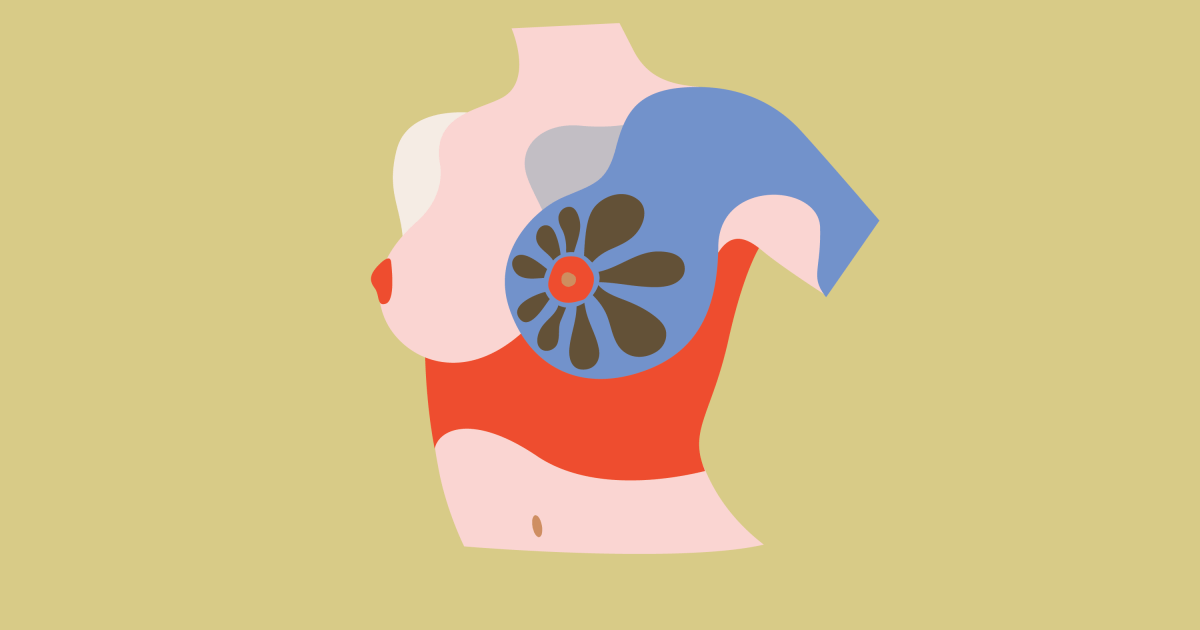It's August 1st, which means it's that time of the month. Don’t delay. Don’t push it to tomorrow. Perform your self-check breast exam today!
TV personality Giuliana Rancic, who was diagnosed with breast cancer in 2011, takes her (and your) breast health very seriously. At the start of last month she shared a reminder in her Instagram stories, and this month we are repeating it, do your self-exam today.

Conducting a Breast Exam On Your Own
Breast self-examination is a tremendous tool that can help you in early breast cancer detection, but it should be coupled with routine scans and physical exams.
Tips for doing a breast exam on your own:
- Step 1: Begin by looking at your breasts in the mirror.
– Stand with shoulders straight, with hands on hips, and look for the following:
– Breasts that are their usual size, shape, and color
– Breasts that are evenly shaped without visible distortion or swelling
– If you notice dimpling, puckering, or bulging, bring this to your doctor's attention
– Also check with your doctor if a nipple has inverted or changed position; or you see redness, soreness, a rash, or swelling.
- Step 2: Raise your arms and look for the same changes
– While you're facing the mirror, look for any signs of fluid coming out of one or both nipples (this could be a watery, milky, or yellow fluid or blood).
- Step 3: Feel your breasts while lying down:
– Use your right hand to feel your left breast; your left hand to feel your right breast. Use a firm, smooth touch with the first few finger pads of your hand, keeping fingers flat and together. Use a circular motion, about the size of a quarter.
– Cover the entire breast from top to bottom, side to side from your collarbone to the top of your abdomen, and from your armpit to your cleavage.
– Follow a pattern to be sure that you cover the whole breast. You can begin at the nipple, moving in larger and larger circles until you reach the outer edge of the breast. You can also move your fingers up and down vertically, in rows, as if you were mowing a lawn. This up-and-down approach seems to work best for most women.
– Be sure to feel all the tissue from the front to the back of your breasts: for the skin and tissue just beneath, use light pressure; use medium pressure for tissue in the middle of your breasts; use firm pressure for the deep tissue in the back. When you've reached the deep tissue, you should be able to feel down to your ribcage.
- Step 4: Feel your breasts while you are standing or sitting.
– Many women find that the easiest way to feel their breasts is when their skin is wet and slippery, so they like to do this step in the shower. Cover your entire breast, using the same hand movements described in step 3.
– As mentioned, home breast exams are not the only way that you should be checking on your body and your health. Routine mammograms and regular doctor appointments are also crucial for keeping up with your body’s health.
The Importance of Routine Mammograms
Mammograms are the most effective way to detect breast cancer. Dr. Connie Lehman, Chief of the Breast Imaging Clinic at Massachusetts General Hospital and professor of Radiology at Harvard Medical School, spoke to SurvivorNet about the need for annual mammograms between the ages of 45 and 54. There is debate about how early to begin annual mammograms and some doctors would argue in favor of earlier screenings. However, if you fit into the high-risk category, meaning you have a first-degree relative who has had breast cancer, have the BRCA1 or BRCA2 gene mutation, or had radiation to the chest area when you were young, Dr. Lehman says you should start yearly mammogram screening as early as age 30.
Mammograms Are Sometimes Not Done Early Enough
Dr. Senyat Agonofer, a Radiologist at Lenox Hill Radiology focused on screening breast cancer, has also expressed the need for earlier annual mammograms as a means of catching breast cancer sooner. I think the most frustrating things that I see in my office are when patients come in with a huge, golf ball breast cancer that could have probably been diagnosed in an earlier age if they were receiving annual screening mammograms," says Dr. Agonofer. This shows the need for screenings being conducted and also highlights the necessity of performing self exams at home as a preliminary attempt of early detection.
RELATED: New Guidelines Say Many Women Under 50 Can Skip Mammograms. That May Not Be The Best Advice
Breast Cancer at the Age of 18
There have also been cases of younger people being diagnosed with breast cancer as well, even further mandating the need for early detection. "My doctor said 18-year-olds don't get breast cancer," Brittney Beadle told SurvivorNet. Her mastectomy was scheduled for the day of the senior prom. A month later she was told she had metastatic breast cancer: It was "treatable but not curable." She is now 23 years of age and attempting to live her best life as a cancer survivor.
Learn more about SurvivorNet's rigorous medical review process.


